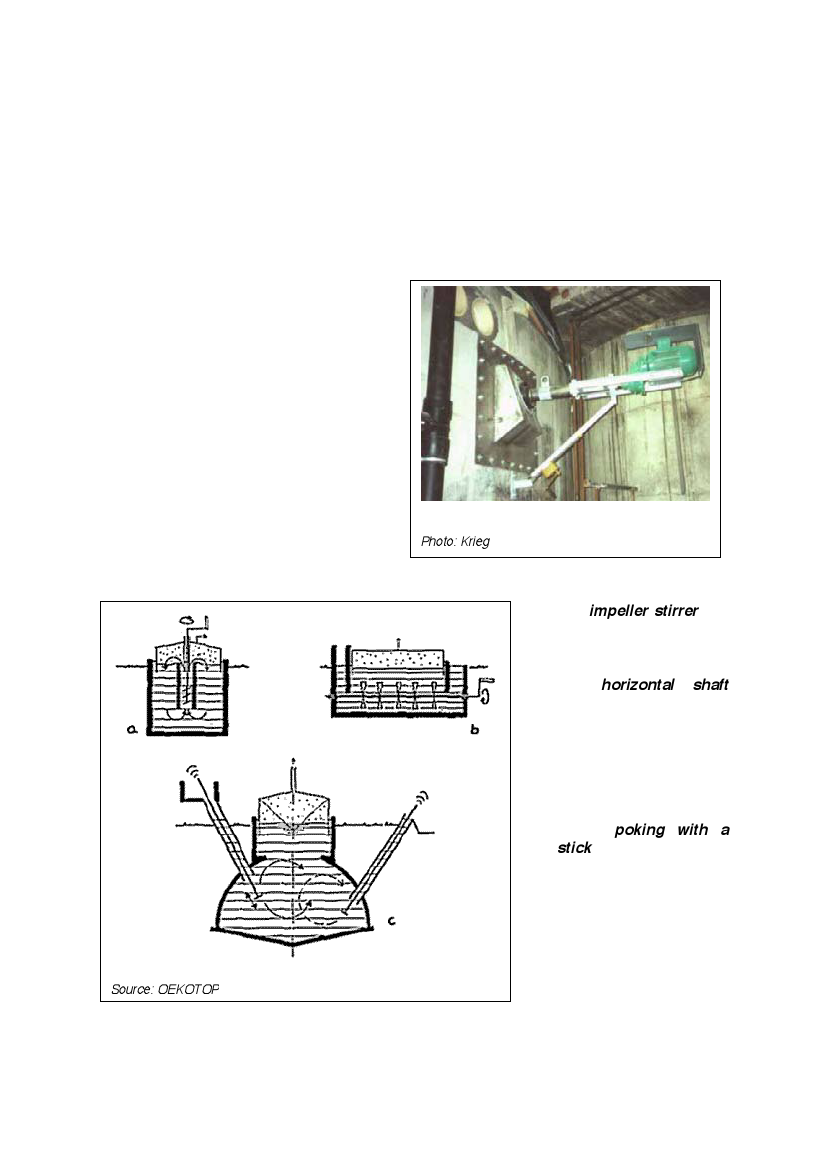
nominal dimensions of 1/2" or 3/4" are adequate for small-to-midsize plants of simple design
and pipe lengths of less than 30 m. For larger plants, longer gas pipes or low system
pressure, a detailed pressure-loss (pipe-sizing) calculation must be performed.
When installing a gas pipe, special attention must be paid to:
• gas-tight, friction-type joints
• line drainage, i.e. with a water trap at the lowest point of the sloping pipe in
order to empty water accumulation
• protection against mechanical impact
Stirring facilities
Optimum stirring substantially reduces
the retention time. If agitation is
excessive, the bacteria have "no time to
eat". The ideal is gentle but intensive
stirring about every four hours. Of
similar importance is the breaking up of
a scum layer which has lost contact with
the main volume of substrate and is,
therefore, not further digested. This top
layer can form an impermeable barrier
for biogas to move up from the digester
to the gas holder.
As a rule of thumb it can be stated that
stirring facilities are more important in
larger plants than in small scale farm
plants.
Figure 19: Stirring device for a european
biodigester
Photo: Krieg
Types of stirring facilities
a. The impeller stirrer has
given good results
especially in sewage
treatment plants.
b. The horizontal shaft
stirs the fermentation
channel without mixing
up the phases. Both
schemes originate from
large-scale
plant
practice.
c. For simple household
plants, poking with a
stick is the simplest and
safest stirring method.
Figure 20: Stirring facilities in the digester
Source: OEKOTOP
25